The Filipino American creatives who are reclaiming the barong
- Oops!Something went wrong.Please try again later.
- Oops!Something went wrong.Please try again later.
- Oops!Something went wrong.Please try again later.
Editor’s Note: This feature is part of CNN Style’s series Hyphenated, which explores the complex issue of identity among minorities in the United States.
CNN — As a first-generation child of Filipino American immigrants, I grew up with wistful stories my parents told of their homeland, rich in details from their childhoods spent in a country that seemed as foreign to me as the fictitious lands described in fairytales. These stories were told in a tone that encapsulated both a yearning to seize opportunity in the West and for a life where they didn’t feel like outsiders — where conformity to American culture was not a daily burden.
Many of these stories centered on my paternal great uncle, Philippine President Ramon Magsaysay, and his role cementing the barong Tagalog, a sheer button-down shirt often emblazoned with hand stitched embroidery, as the country’s official formal wear.
More recently, the barong Tagalog — which translates loosely to “dress of the Philippines” and is often abbreviated to barong — has surged in popularity with Filipinos across the diaspora as a point of national pride and style.
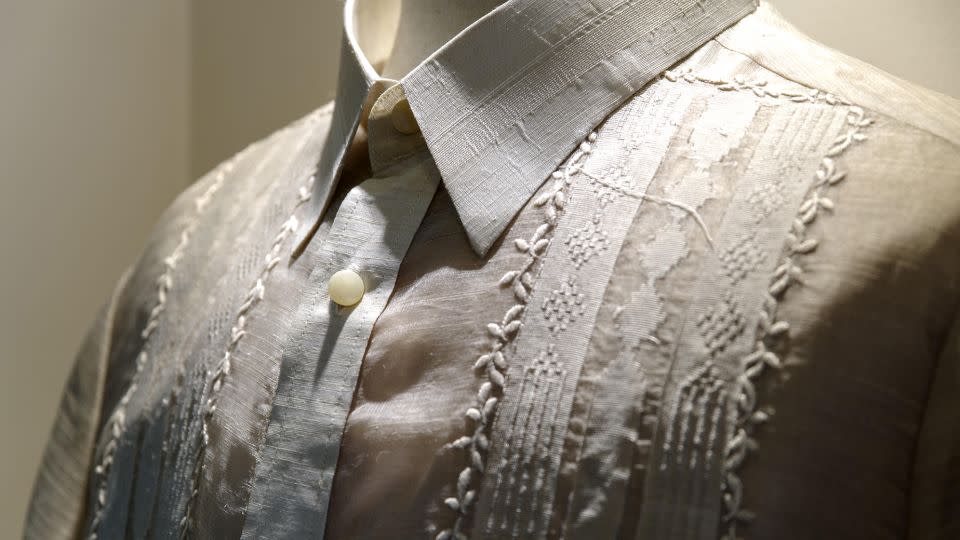
“(The barong) is inherently so glamorous,” explained wardrobe stylist and fashion editor Rap Sarmiento. “With its sheerness and embroidery, it lends itself to the moment. Second generation kids are embracing this.”
The origins of the barong are widely seen as dating back to times before the Philippines was colonized by Spain in the 15th century. Both a status symbol and everyday garment, its sheer fabric has been explained as either a practical design choice, to deal with the intense heat and humidity of the Philippines, or one borne of oppression, with Spanish colonizers wanting to ensure Filipino natives could not steal items or conceal weapons under their clothes.
“The Spanish took (the barong) to all of their colonies… other countries have their own versions,” said Caroline Mangosing, founder and designer of Vinta Gallery, a Canadian-based brand that specializes in Filipino clothing. “Cuba has the guayabera with pockets. The Dominican Republic has a version with pleating.”
During his 1953 inauguration, President Magsaysay wore a barong to show solidarity with the common man. It sparked wide acceptance of the shirt as the Philippines’ answer to a formal suit or tuxedo, and became a garment which struck a strong contrast to westernized suits and ties on the global stage.
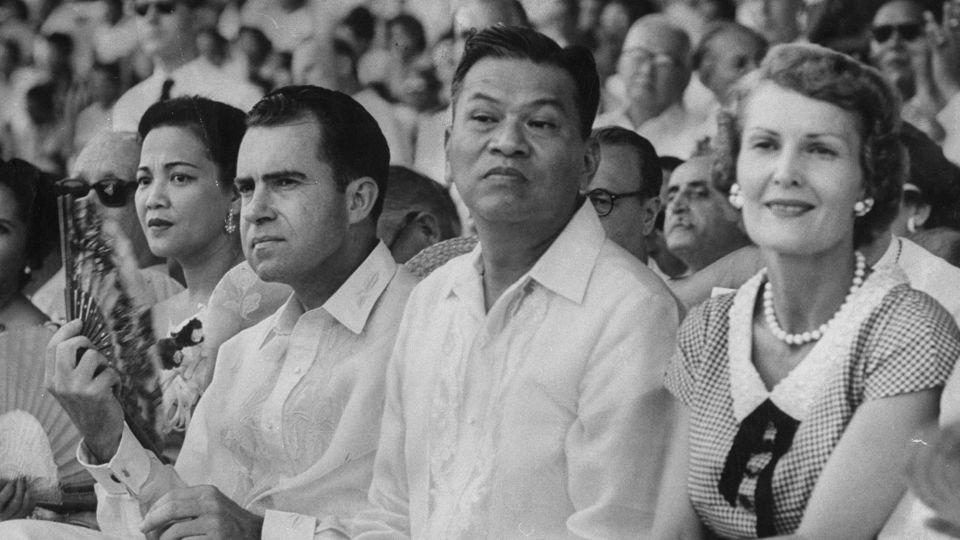
The inauguration marked one of many times President Magsaysay used the barong as a signal toward Philippine independence and resilience, in the period after the nearly 50-year colonization of the country by the United States had come to an end. Supporting his Filipino First Policy to strengthen and grow the economy, the President and his administration invested in garment manufacturing and textile mills, with many using the native materials from which barongs are traditionally made — piña (pineapple fiber) abaca (hemp) and jusi (piña and hemp combined), in turn stoking local industry and the general Filipino public’s interest in native garments made from native fibers — said his son (and my uncle), former Senator of the Philippines Ramon Magsaysay Jr.
“He was committed to supporting Filipino nationalism for our country and people,” Magsaysay Jr. said. “(During his inauguration), we could see him proudly showing his Filipino-made clothing and shoes to a big crowd.”
The barong’s evolution following Magsaysay’s presidency is also as compelling as its colorful and complicated past. President Ferdinand Marcos’ use of the garment, for example, saw its popularity wane among many Filipinos over time.
“There was a political hangover. People didn’t want to be like them,” said Mangosing of Marcos and his wife Imelda, whose predilection for Filipiniana (traditional women’s dress) also saw the fashions go out of style once they were exiled from the country. “After that, I feel like everyone stopped wearing barongs for a while, so it stopped evolving — what remained were mass-market versions in garish colors.”
But as more Filipinos have permeated fashion, music and pop culture at large in the United States (and around the world) in recent years, the barong has bounced back in ways that are strikingly creative, individual and inspiring.
Vinta Gallery’s barongs, which are handmade and embroidered at an atelier in the Philippines, range from $300 to $600 for a ready-to-wear version and can swing north of $1000 for custom. They are among the brand’s most popular items, Mangosing told CNN, particularly those embroidered with anting-anting or other charms based on Philippine folk magic.
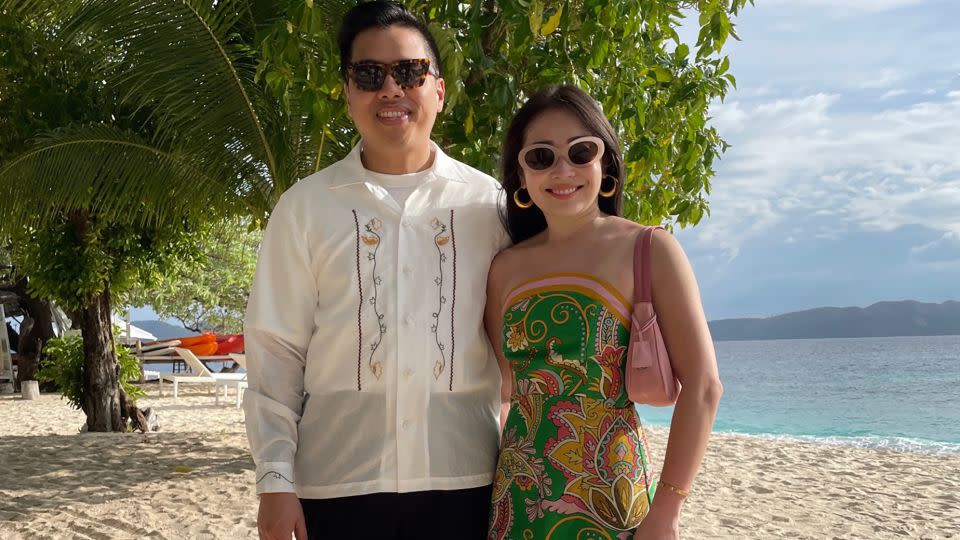
Last year, Jian DeLeon, men’s fashion director at Nordstrom, collaborated with the menswear label Bode on a shirt inspired by a traditional barong, but made from a non-traditional cotton linen blend fabric.
“I took inspiration from when French designer Pierre Cardin redesigned the (shirt) silhouette in the 1970s,” De Leon said. “Cardin added touches like a camp collar and French cuffs and embraced a more global style of embroidery. I think these are the kinds of projects that can put these inherently Filipino fashion items into a global context.”
Attending a Nike “Filipino Forces” dinner in Los Angeles last fall, an event celebrating Filipino Americans working in music, fashion and entertainment, Sarmiento wore his father’s barong over a t-shirt from Rhude, a black tennis skirt and black Margiela Tabi boots. “It was a way to bring it forward,” said the stylist.
At the same event, designer and influencer Aleali May wore a barong with distressed jeans, hoop earrings and limited-edition Nike Air Force One sneakers.
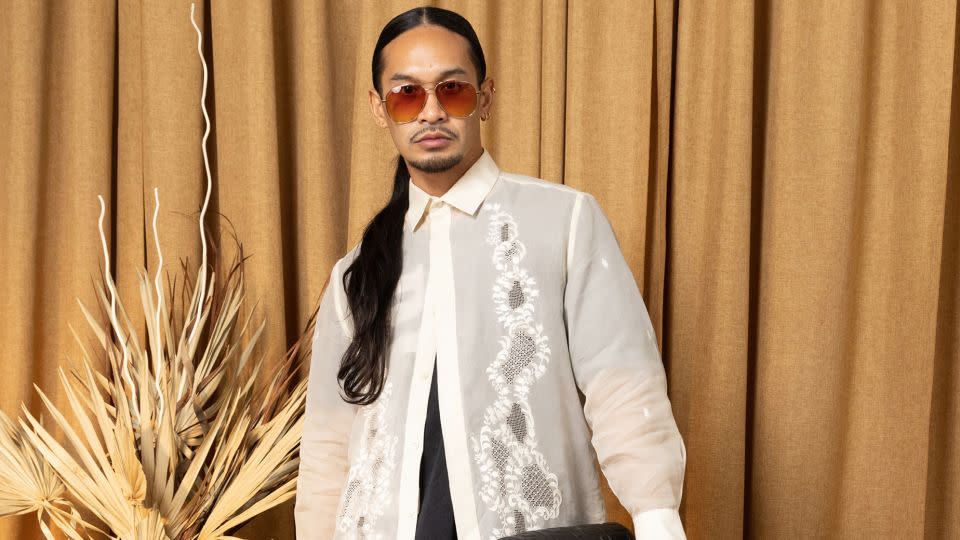
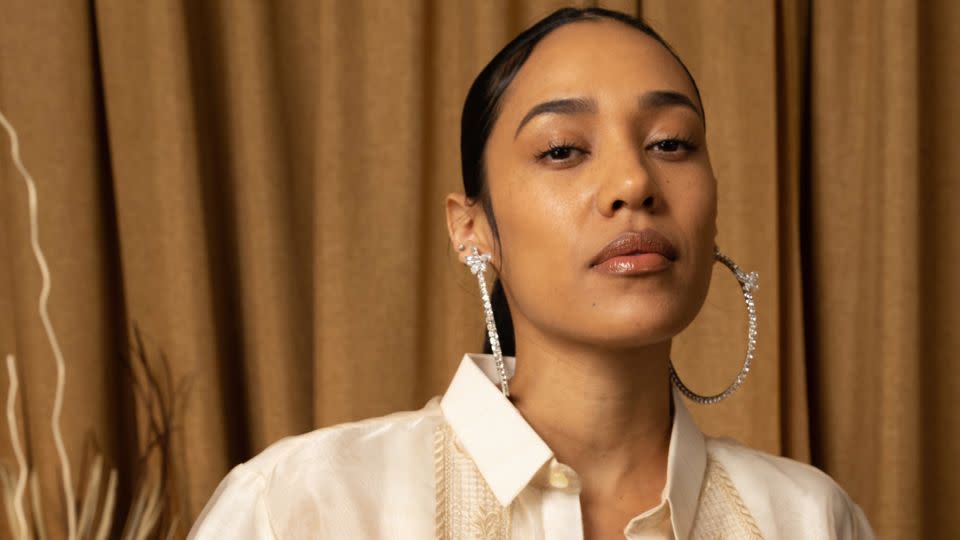
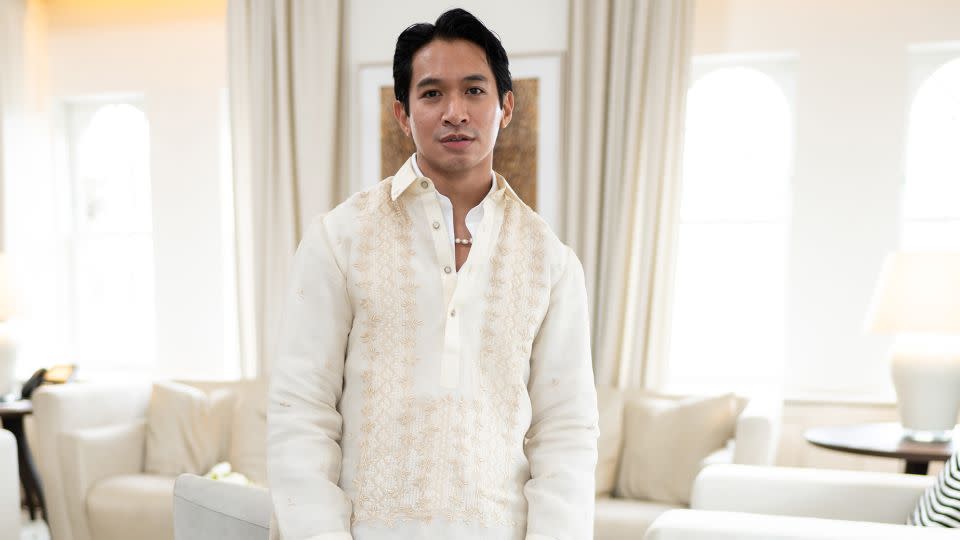
“When I first started in music, I was usually the only Filipino at events, and now it’s typical to see 3 or 4 of us, so it’s not unusual to see a barong being worn,” said music executive Marisa Pizarro. “It’s an elevated look without having to wear a suit. You rarely see suits (in creative industries) anymore.”
Other Filipino-American celebrities have recently opted to don a barong both on red carpets and other highly visible events. Last year, Levi’s created a custom-made denim barong for Jo Koy, juxtaposing the traditional garment’s fabrics with the cut of a trucker jacket. Covering the opening night of Broadway musical “Here Lies Love” for Vogue Philippines, photographer Martin Romero noted that, “a lot of the men, specifically the cast members, and a lot of the guests, wore traditional and modern barongs.” Likewise, the barong has become increasingly ubiquitous among Gen Z on social media, with young people wearing brands like Vinta Gallery and The Mestizo on their Instagram and TikTok feeds.
NBA players Klay Thompson and Kevon Looney — who are not Filipino — recently wore barongs during their Asia tour as ambassadors for athletic brand Anta. “It looks wonderful. And feels even better, too,” Thompson told Esquire Philippines of the garment. It was a gesture the magazine described as a “Pinoy Pride moment.”
“It’s a combination of social media and awareness of Filipino culture — wanting to wear traditional garb to show off our culture,” said entrepreneur Rembrandt Flores. “Younger people’s interest is piqued and they are choosing to wear the barong as a source of pride and sartorial creativity.”
For more CNN news and newsletters create an account at CNN.com

